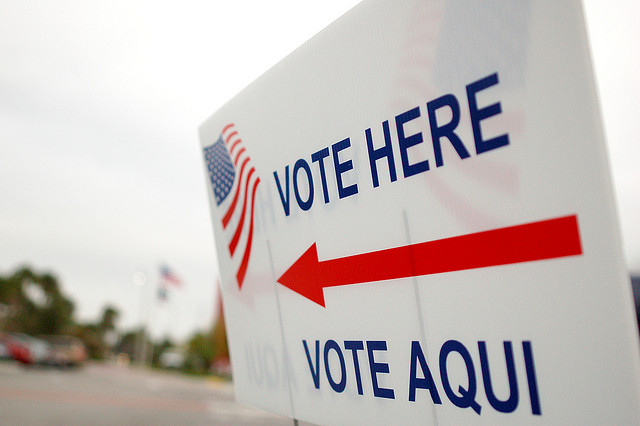When Houstonians head to the polls Saturday to vote in the closely contested mayoral runoff election, one group of voters will likely be vastly underrepresented: Latinos.
While Latinos make up 44 percent of the city's population, they only made up an estimated 13 percent of the voters who cast ballots in last month's mayoral contest. Even fewer -- an estimated 7 percent -- will vote in the runoff contest, projects Mark Jones, a Rice University political scientist and fellow at the Kinder Institute for Urban Research.
When the dust settles on Saturday, of the city's 18 elected positions -- mayor, controller, and city council posts -- only one or two will be held by Latinos, depending on how runoff elections shake out. It's a striking situation, considering Latinos make up nearly half the city's population and are by far the dominant racial group in terms of population numbers.
"There's a crisis of Latino voter participation," Jones said.
Story continues below chart
The chart above, based on data Jones compiled, helps explain why Latinos are so underrepresented in Houston government. For starters, there's a big gap in terms of citizenship. While the Latino population is 44 percent, it's percentage of citizens -- those who can vote -- is 26 percent. That brings their voting-eligible numbers closer to both the white and black populations of the city.
Interestingly, Jones said, there seems to be a growing trend in Texas that some Latinos who are eligible for citizenship choose not to apply. The cost of the exam as well as difficulty speaking English have become deterrents. If money or time is tight, some Latinos may not see much of a benefit in citizenship if they are already legal permanent residents, he said.
Jones noted that the candidacy of former Harris County Sheriff Adrian Garcia, who is Latino, seemed to help boost Latino voter turnout in November's election by a few percentage points to 13 percent. But with him knocked out of the runoff race, Jones projects Latino voter turnout to fall to 7 percent in the runoff.
The low amount of Latino political participating is an issue facing the entire state. The Texas Anglo population is 8.5 million, and 5.1 million of them — about 60 percent — voted in the 2012 presidential election. Of the 6.8 million Latinos in Texas, 4.9 million are citizens. Just 1.9 million, or 39 percent of those citizens, cast ballots in the election.
That's cause for concern because every year, the Latino population is growing, and by 2030, the plurality of the state population will be Latino, Jones said. Essentially, Houston is giving Texas a look at what's to come.
Story continues below chart
Jones is part of a team that will be studying the factors that affect Latino voter turnout in Houston. Their research will be based on voter files from all elections, big and small, in the 10-county greater Houston region dating back 15 years.
The goal is to help learn more about factors that affect Latino turnout, such as the timing of elections, the existence of Latino candidates, or efforts to expand early voting. They hope to generate potential ideas for policy reforms that can improve Latino participation at the polls and in public office.

